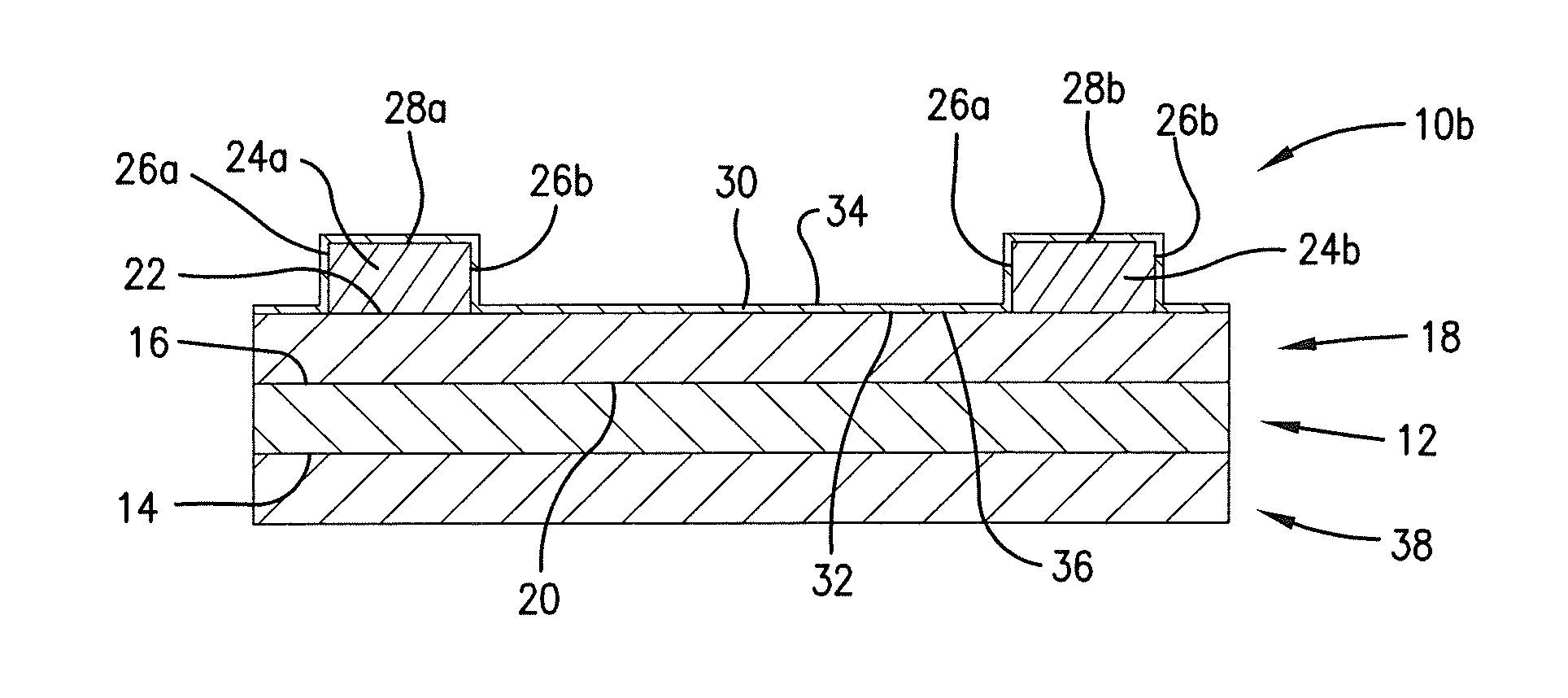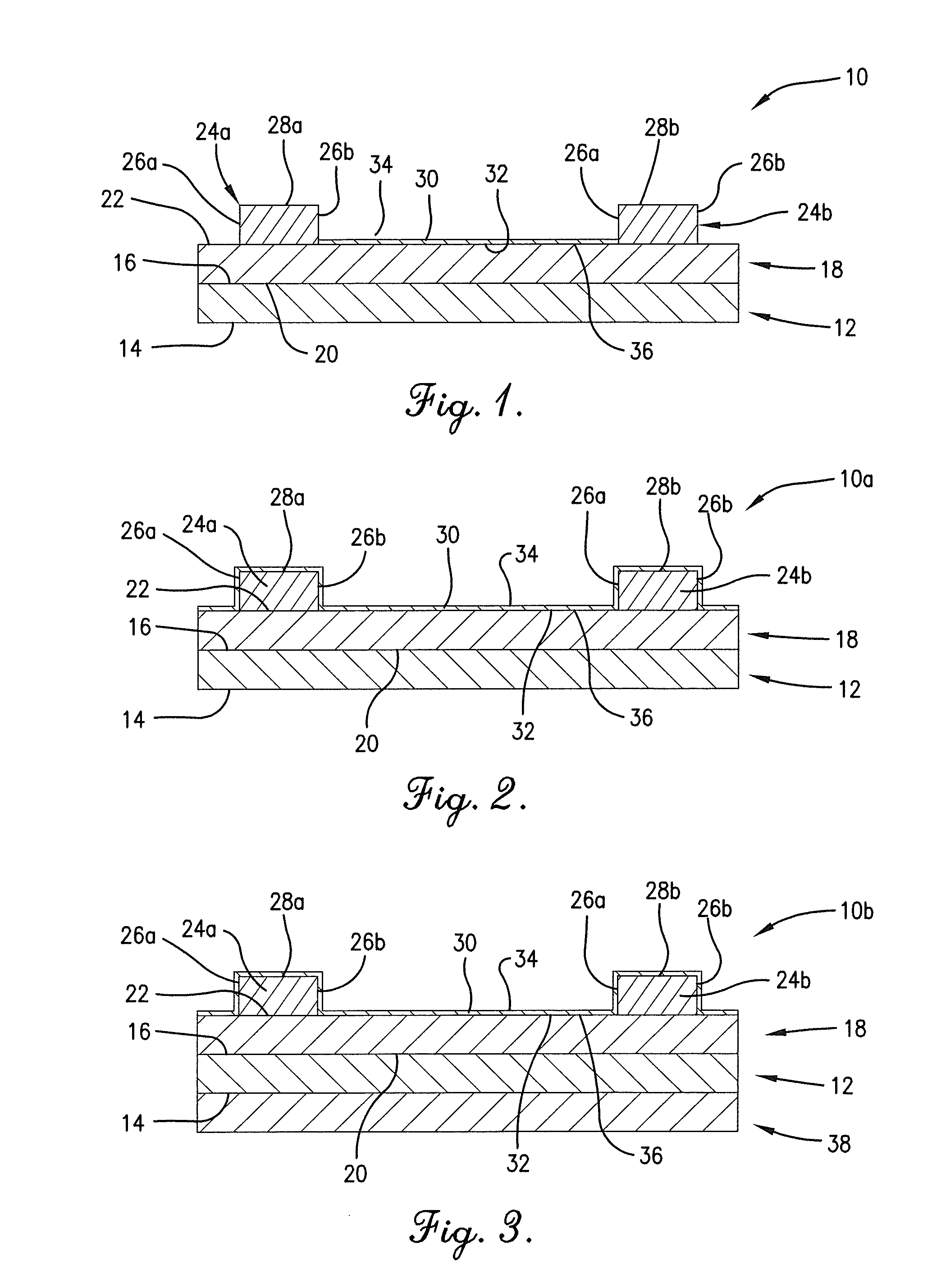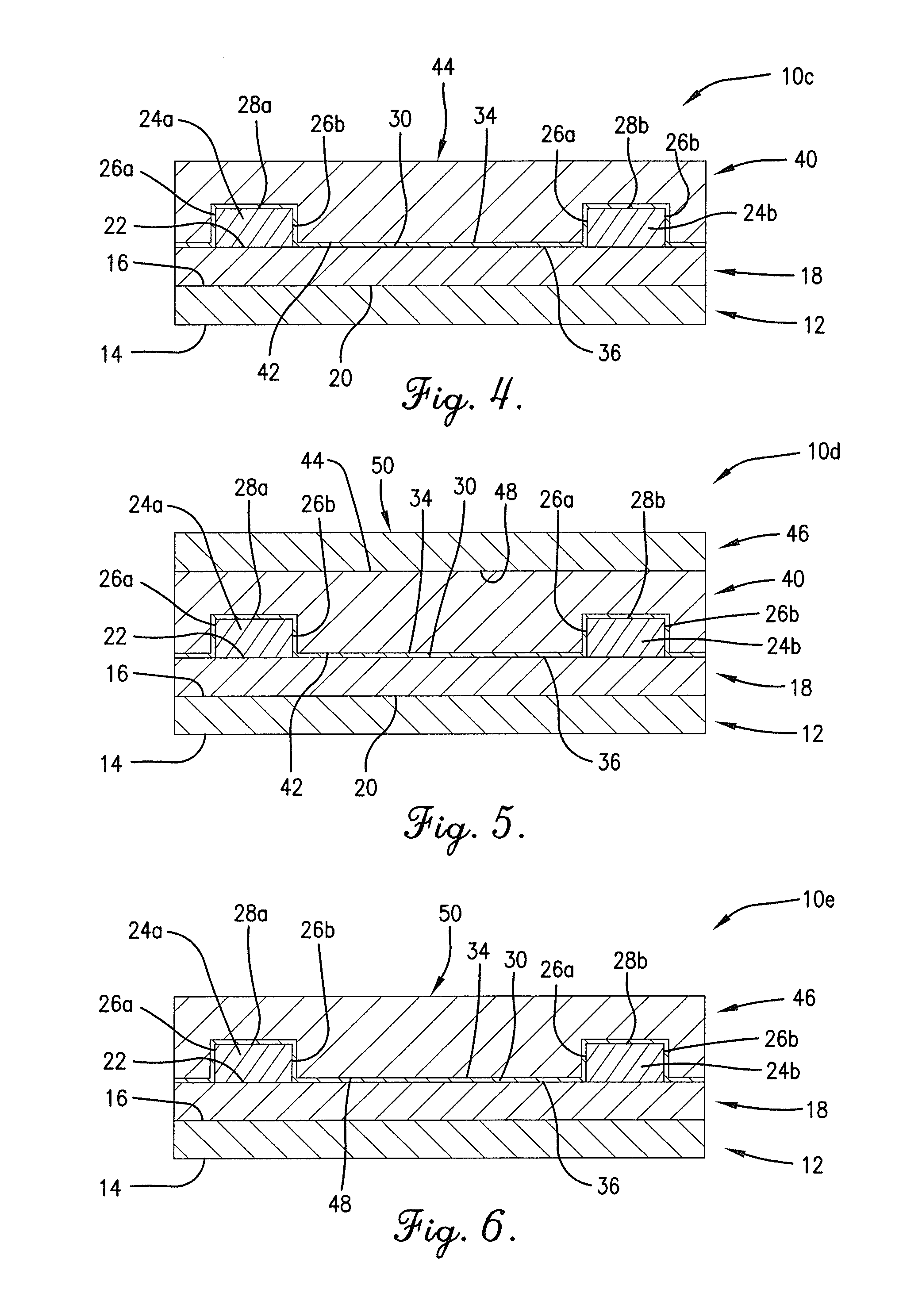Thin-film resistive-based sensor
a resistive-based sensor and thin film technology, applied in the direction of resistance/reactance/impedence, heat measurement, instruments, etc., can solve the problems of poor performance of resistive-based sensors, low stability, and limited use of these sensors for various applications
- Summary
- Abstract
- Description
- Claims
- Application Information
AI Technical Summary
Benefits of technology
Problems solved by technology
Method used
Image
Examples
example 1
Preparation of Carbon Nanotube Ink 1
[0098]Brewer Science® CNTRENE® 1020 material was used as the source for CNT ink. To facilitate printing, a 1:1 solution of dimethylformamide (DMF) (Sigma-Aldrich, Part #D158550-4L) and deionized water was used to dilute the ink to an optical density of 2.0 for spraying onto the devices by diluting the original CNT ink (equivalent OD of 24) by about 1:12 with the DMF and DI water solution and shaking for about 30 seconds.
example 2
Preparation of Carbon Nanotube Ink 2
[0099]Brewer Science® CNTRENE® 1020 material was used as the source for CNT ink. To facilitate printing, deionized water was used to dilute the ink to an optical density of 2.0 for spraying onto the devices by diluting the original CNT ink (equivalent OD of 24) with DI water and shaking for about 30 seconds.
example 3
Fabrication of Integrated Temperature / Analyte Transducers on PET
[0100]In this Example, 32 integrated temperature / analyte transducers were fabricated on a flexible Melinex® ST730 PET substrate (Tekra, Inc., 16700 West Lincoln Avenue, New Berlin, Wis. 53151. The structure of the transducers is shown in FIG. 11. First, the substrate was baked in a conveyor oven at 130° C. at a 10″ / min speed. Next, a bottom metal layer, AG-800 silver conductive ink (Conductive Compounds, Hudson, N.H.), was screen printed onto the substrate using a AT-60PD screen printer using the following parameters: screen: polyester, 230 threads / inch, flood / squeegee speed: 225 mm / s, flood bar pressure: 10 psi, squeegee pressure: 25 psi. The substrate was then cured in the conveyor oven at 130° C. at a 10″ / min speed. The cured silver film had a thickness of 5 μm. A bottom insulation layer, an experimental cycloolefin polymer from Brewer Science, Inc., was screen printed on top of the metal layer using the same paramet...
PUM
 Login to View More
Login to View More Abstract
Description
Claims
Application Information
 Login to View More
Login to View More - R&D
- Intellectual Property
- Life Sciences
- Materials
- Tech Scout
- Unparalleled Data Quality
- Higher Quality Content
- 60% Fewer Hallucinations
Browse by: Latest US Patents, China's latest patents, Technical Efficacy Thesaurus, Application Domain, Technology Topic, Popular Technical Reports.
© 2025 PatSnap. All rights reserved.Legal|Privacy policy|Modern Slavery Act Transparency Statement|Sitemap|About US| Contact US: help@patsnap.com



